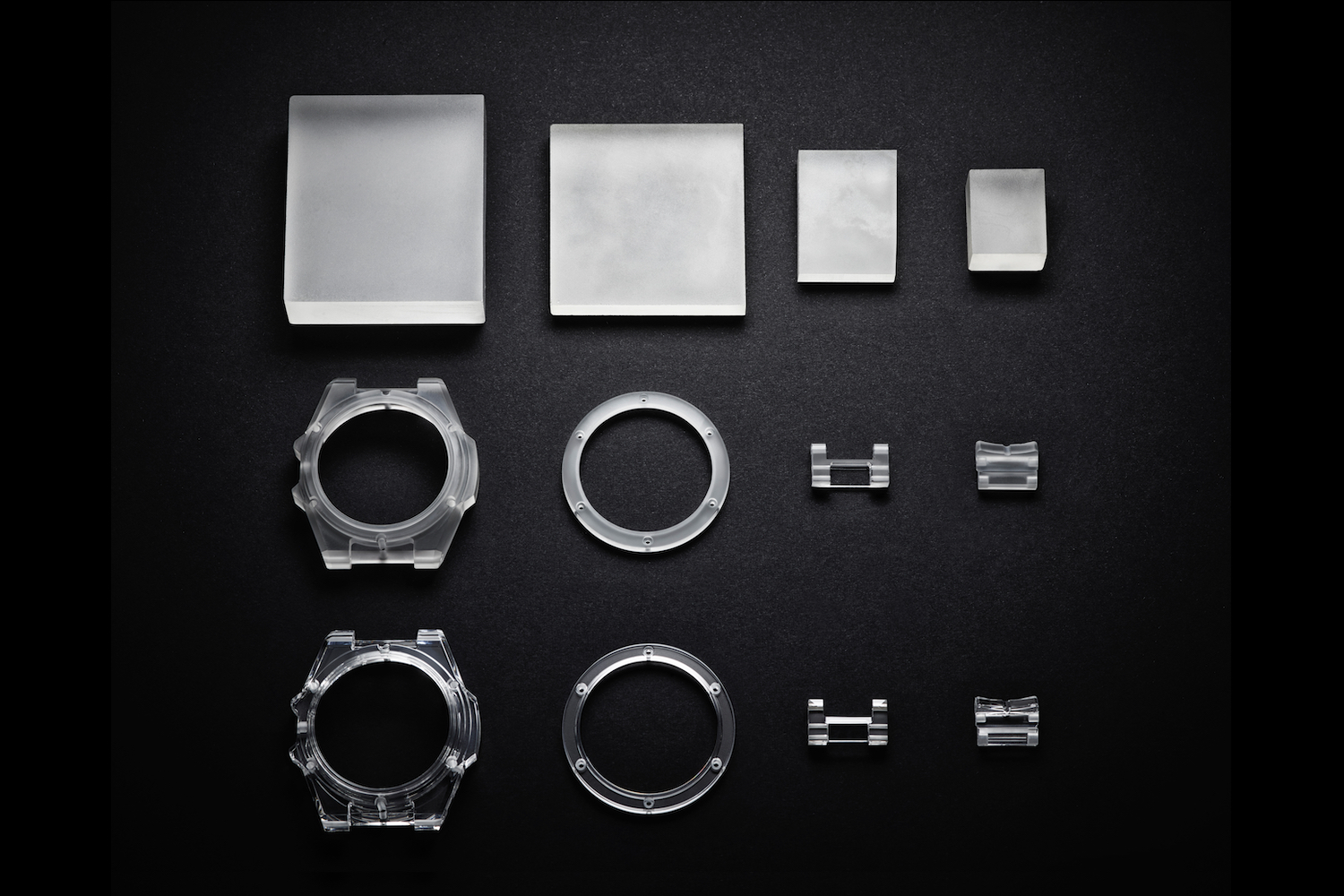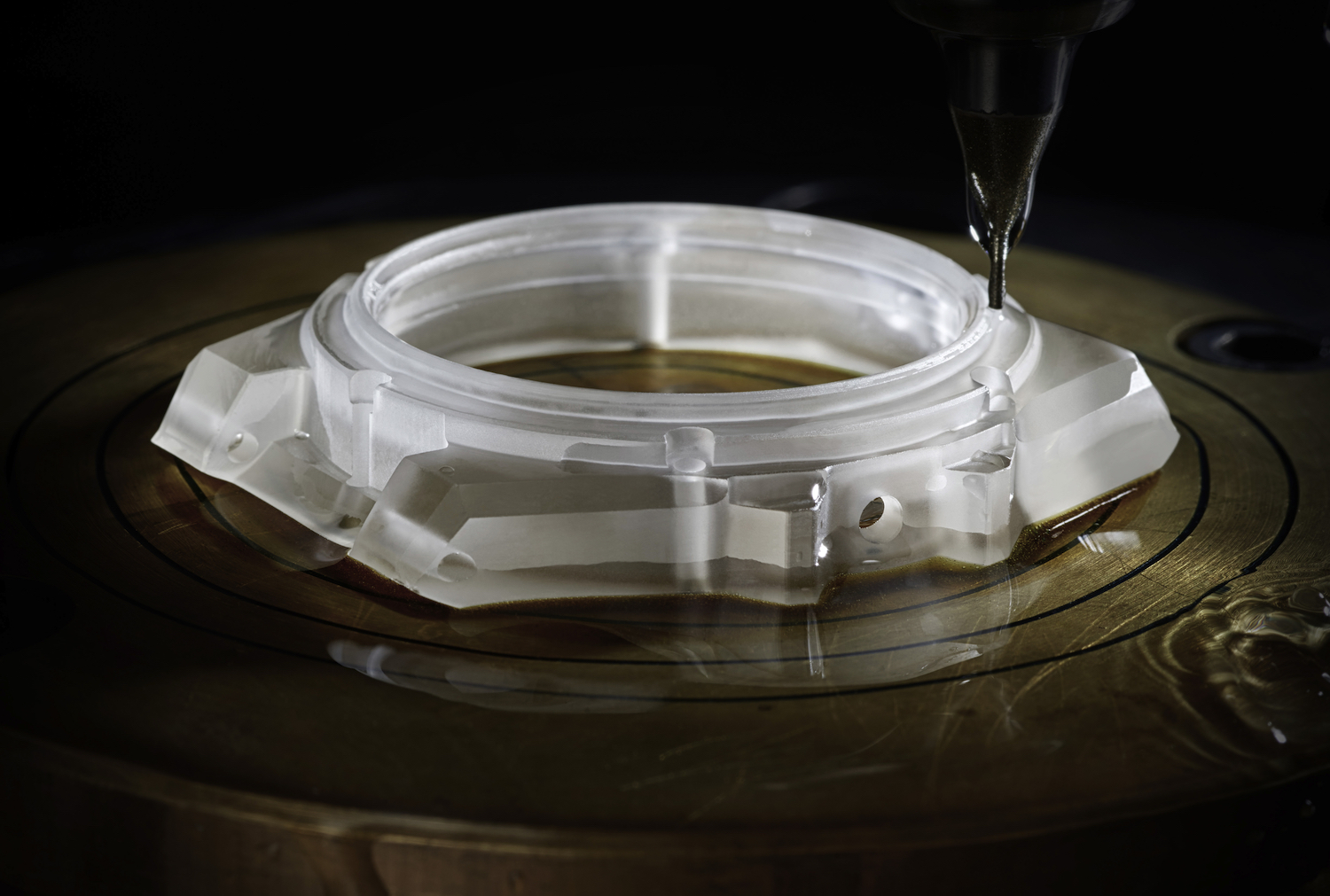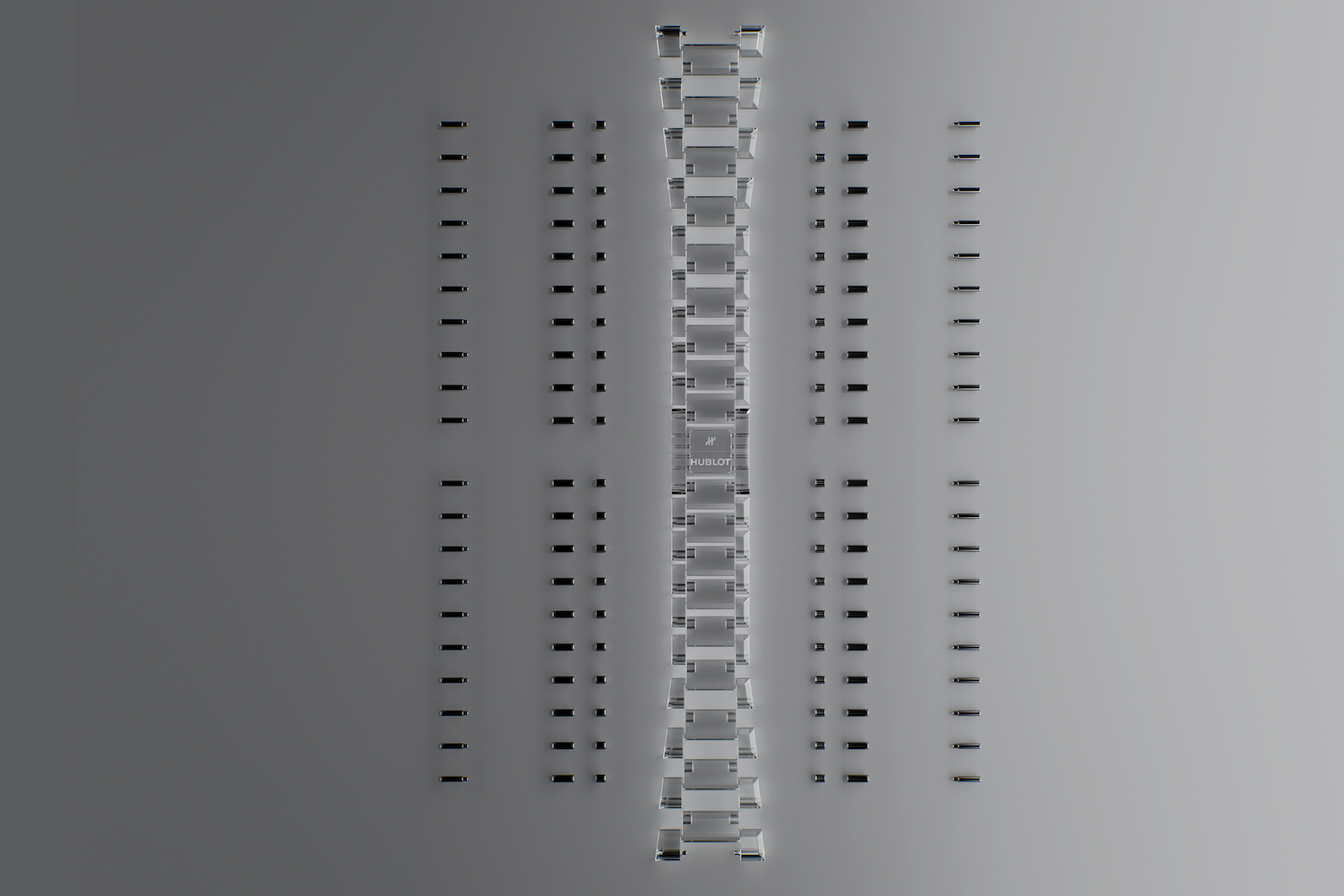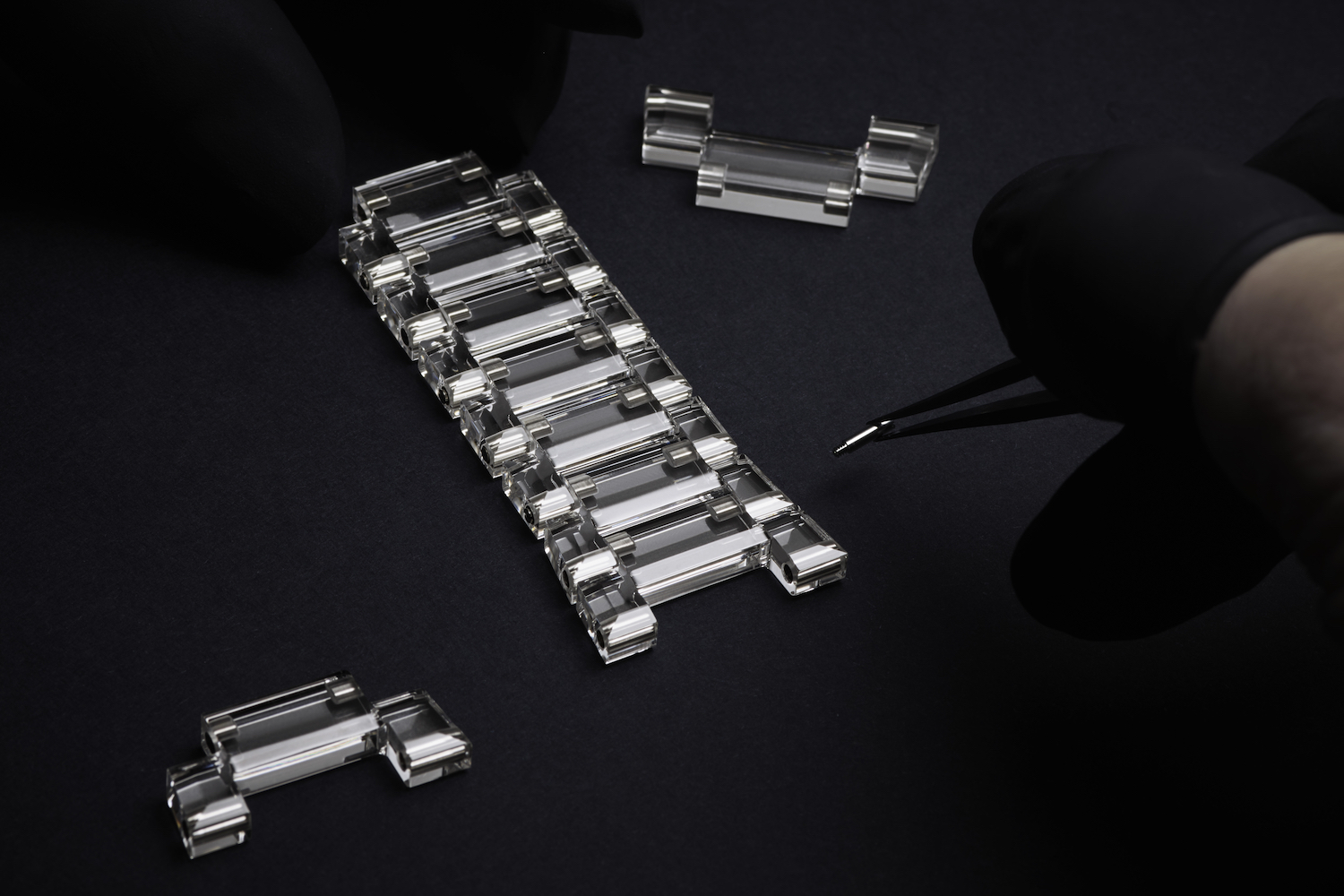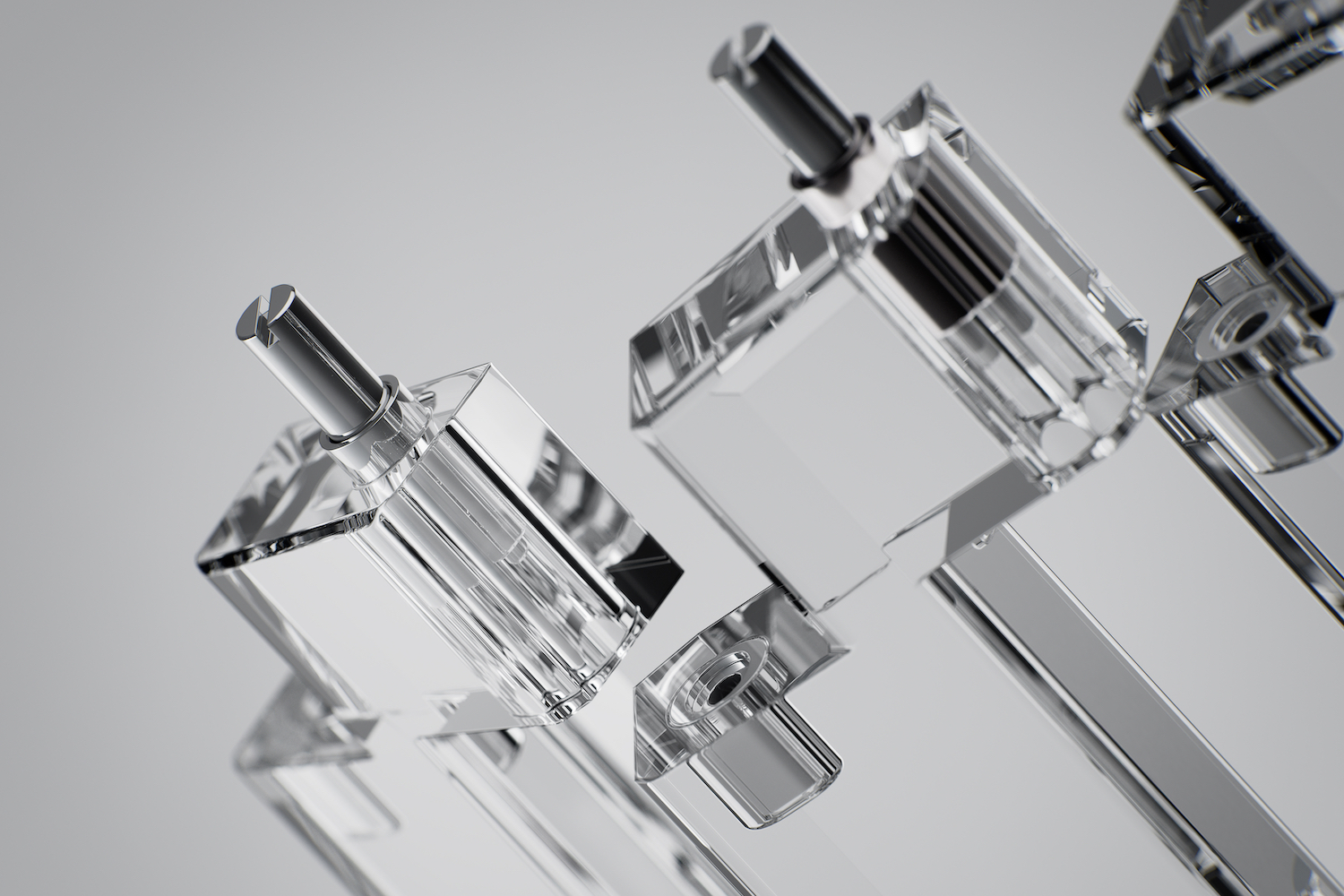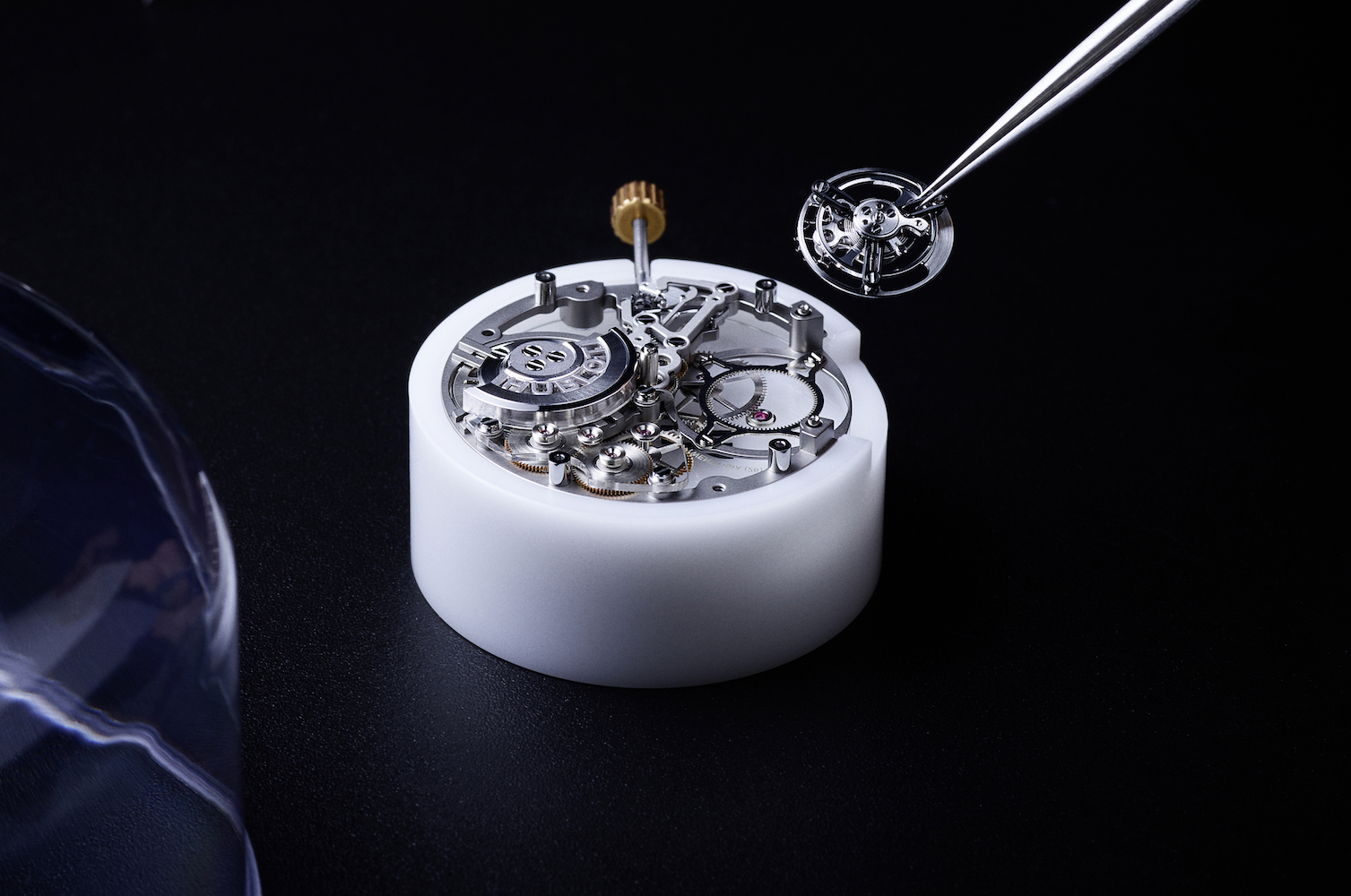Sapphire is known for its toughness, and in the tech world has been used to cover phone screens and smartwatch screens due to its impressive scratch resistance. This, along with the beautifully unique sheen, is also why it has long been used on mechanical watches too, ensuring the dial stays free of marks and blemishes.
In 2016 luxury watch brand Hublot decided using sapphire over the dial just wasn’t enough, and launched the Big Bang Unico Sapphire with a case made entirely of sapphire. The eye-catching piece was only the start, and Hublot’s ultimate goal was to develop a sapphire bracelet to go along with it.

Now, in 2021, it’s a reality. This is the Hublot Big Bang Integral Tourbillon Full Sapphire, and it’s an extraordinary, mesmerizing, audacious piece of technology. Hublot’s CEO Ricardo Guadalupe spoke to Digital Trends via email about the complexity of the project.
Two-year development
“For the Tourbillon Full Sapphire, it has taken us over two years to develop this product because sapphire is a really hard material, but at the same time really fragile. We had to totally reconstruct the bracelet to allow you to wear it without breaking it because pressure is sapphire’s enemy,” Guadalupe explained.
The challenging project encompassed multiple departments at Hublot:
“We have the technical department for the movement, the product department for the development of the case and the bracelet, and of course the research and development department to allow us to create the industrial process.”

The result is a watch with a 43mm case, bezel, dial, and anti-reflective crystal all made from polished sapphire, and attached to a strap made from the same material, complete with a titanium clasp. Because the watch is entirely transparent every component is on display, it had to be re-engineered and simplified to make it aesthetically pleasing, right down to the screws and pins used to hold the bracelet together. Hublot wanted the final product to appear as if the internal components were floating in space. We think it succeeded.
“With transparency,” Guadalupe said. “You have a really unique watch design which makes the piece totally different.”
Making sapphire
The sapphire Hublot uses isn’t natural sapphire, it’s a synthetic version and actually grown in a lab, yet has the same appearance and hardness as the “real” thing.
“The challenge of sapphire is in the production, which is totally different to the production of titanium or gold. We had to rethink and use new technology, machines, and a way of polishing,” Guadalupe told us. “It is a similar production to synthetic diamond, and takes two to three weeks to grow. If any resulting block has an imperfection, it is rejected. The watch’s case, bracelet, and bridges are all sapphire components.”
Hublot’s history with sapphire started in 2016 and it has continued to innovate with the material since then, but moving to a full sapphire watch was a huge leap forward.

“Sapphire is a really important material for Hublot because we were the first brand to industrialize it. In 2016, we came out with our Big Bang Unico and since then, we have been able to develop new colored sapphires like blue, yellow, and orange that we presented in January 2021 with the Big Bang Tourbillon Orange Sapphire. We decided the ultimate goal was to develop a bracelet.”
“Instead of just having a case with five sapphire components,” Guadalupe continued, “we have been able to create and develop 22 components that fix the bracelet on the watch. All together, there are five components for the case and 22 for the bracelet. Even the movement has three bridges in sapphire. Every component has been created by itself, with a specific industrialization process. It is really an incredible achievement from a technological point of view.”
Hundreds of components
The watch’s construction is astonishingly complex. The bracelet is made up of 165 parts in total, including the 22 sapphire components, and uses specially designed titanium inserts that sit flush against each link, which Hublot says are a first for the watch industry. The case has 37 components and houses Hublot’s entirely in-house developed HUB6035 automatic movement. Guadalupe explained more about the movement, and its sapphire bridges exclusive to this model:
“For the movement, we don’t want to just repeat the past. The tourbillon was invented in 1801 by Abraham Louis Breguet, and we decided to create a new caliber with a micro-rotor at 12 o’clock which adds an incredible design to the movement and watch as well. Having the micro-rotor at 12, the tourbillon cage at 6 o’clock, and the three sapphire bridges really gives the watch an incredible look.”
The Big Bang Integral Tourbillon Full Sapphire has a power reserve of 72 hours, and despite being made from sapphire, still has 30 meters’ water resistance. When you consider everything is visually exposed inside the case, to still include — and effectively hide — the gaskets needed for this, is very impressive.
Sapphire and its future
What’s surprising about Hublot’s sapphire watches is what they’re like to wear. Although I’ve not worn this model, I’ve been lucky enough to try a previous sapphire cased watch — the Hublot Classic Fusion Tourbillon Orlinski Sapphire — and had expected it to feel weighty, cool, and perhaps rather unemotional, a bit like glass would. Instead, it’s the opposite. The sapphire made the watch warm, light, and wonderfully delicate. The skeletonized movement and transparent case gave the watch life, and I doubt I’d have felt connected with it in the same way if I couldn’t see it working. It was unlike any watch I’d put on before.
Where does the creation of the Big Bang Integral Tourbillon Full Sapphire leave Hublot? After all, it has achieved its goal of making a sapphire bracelet to go along with its sapphire watch case. Guadalupe talked about what will come next:
“Hublot is the leader in the production of sapphire watches by far, because we have been able to not just produce five or 10 pieces per year, but a few hundred watches per year since 2016. The idea is always to create and innovate, maybe to come up with new colored sapphire after blue, yellow, orange. Tomorrow we can do a new color, but there are always new ideas, shapes, and designs in which we will use sapphire. We believe that this trend will remain valid for a few years.”
Hublot’s watches often split opinion when it comes to style, and the Big Bang Integral Tourbillon Full Sapphire will be no exception, but that doesn’t stop it from being technically extremely impressive, and a fascinating piece of wrist-worn art from a maker that pushes what’s possible from a notoriously hard to work with materials.
Just 30 of these incredible watches are being made, but you may have to save for a little while to get one or do something drastic like sell your house, as they’re priced at $422,000, or 349,000 British pounds each. If nothing else, it makes the $5,200 Hublot Big Bang e smartwatch look very reasonably priced.

